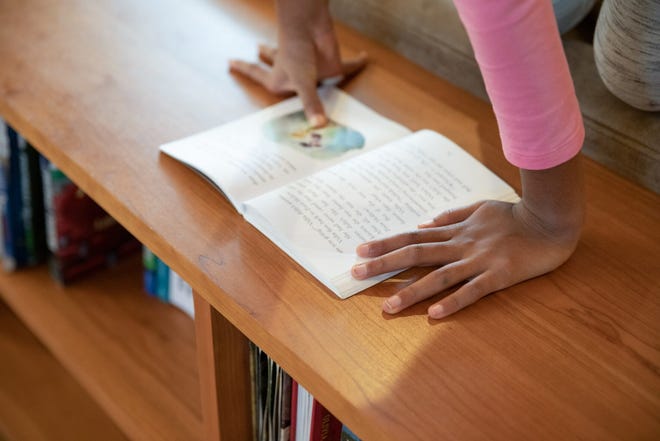Kansas homeschooling numbers spike after pandemic-era remote learning

WICHITA — Worried about safety, resistant to mask orders and troubled by a lack of confidence in public schools, thousands more Kansas parents are opting to teach their kids at home.
The shift comes in the wake of the pandemic that convinced those families they could handle the job.
“We just had call after call after call,” said Bert Moore, who oversees home-school registrations for the Kansas Department of Education. “And they continue to call us. This isn’t something that occurs in just August. … It will be May before we have the final number.”
During a normal school year, about 1,400 Kansas families newly register to home school. Last year that number more than tripled — to 5,527 — and the trend doesn’t seem to be slowing. So far this year, more than 2,250 new families have registered.
Remote learning led many to stick with home-schooling
Experts say the switch to remote learning during the pandemic persuaded record numbers of families to consider home-schooling long-term. Some want more flexible schedules or greater control over their children’s lessons. Others are disillusioned with the traditional model of education or worried about plummeting test scores.
“This increase in homeschooling is something that was ratcheting up for many years prior to the pandemic, but the pandemic has certainly jump-started it and caused it to spike,” said Lance Izumi, author of “The Homeschool Boom.”
During the early stages of lockdowns, parents got front-row seats to their children’s schooling. That, Izumi said, “demystified the learning process for them.”
“You’re seeing people discovering home-schooling as something that is doable, which they thought was not prior to the pandemic,” he said.
Moore, the state education official, said it’s hard to know whether COVID-19 is causing a temporary increase in home-schooling or a larger shift that will continue after the virus is controlled.
The number of students enrolled in Kansas public and private schools in dropped by more than 15,000 in 2021 compared to 2019, according to state data. Some of those students may have moved out of the state, but many likely enrolled in virtual or homeschooling.
“It’s not going to be a momentary blip,” said Izumi, the author. “That’s the incentive for regular public schools to address those gaps in order to entice these parents to come back.”
Enrollment in Wichita, the state’s largest district, fell by 5.6{e4f787673fbda589a16c4acddca5ba6fa1cbf0bc0eb53f36e5f8309f6ee846cf} during the 2020-21 school year — much of that in pre-school and kindergarten. Officials hired two full-time staff members to visit preschools and daycare centers in an attempt to recruit them back.
Record number of U.S. students being home-schooled
Across the country this fall, a record 8 million students are being home-schooled, including a growing number of Black children. A survey by the U.S. Census Bureau showed that more than 16{e4f787673fbda589a16c4acddca5ba6fa1cbf0bc0eb53f36e5f8309f6ee846cf} of Black families were homeschooling in the fall of 2020 – up from about 3{e4f787673fbda589a16c4acddca5ba6fa1cbf0bc0eb53f36e5f8309f6ee846cf} the previous spring.
Some education advocates raise concerns about the quality of home schools, since there is little state oversight.
“There are good quality programs out there for home-schooling,” Moore said. “But I am concerned about students’ exposure to collaboration, to cooperative learning, to working in teams and having that experience of participating in the things that students in our schools get to experience.”
Suzanne Perez reports on education for KMUW in Wichita and the Kansas News Service.




